Matador Network's Blog, page 1213
November 28, 2018
The best adventures to have in Aruba
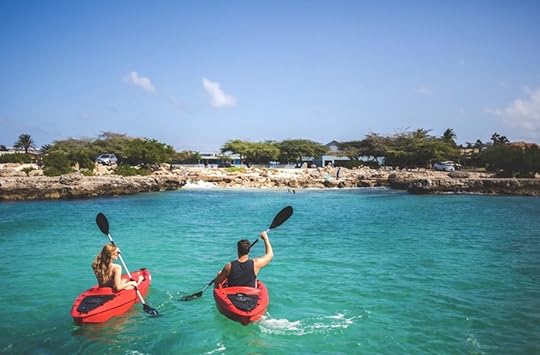
It’s that time of year again. No, not the time to start hanging Christmas lights, rather to go into complete and utter denial about the coming of winter — and head to somewhere tropical instead. But if simply laying out on the beach doesn’t get you stoked for vacation, you need to head to the most adventurous Caribbean island of them all: Aruba. Here, there’s more to an island vacation than just cabanas and swim-up resort bars. The locals call Aruba “One Happy Island,” but it’d be more accurate to call it “One Thrilling Island” since it has more adrenaline-pumping activities available to visitors than any of its neighbors. From off-roading on Aruba’s rugged, desert-like landscape to windsurfing off the coast of Palm Beach, this is every epic thing you can do in Aruba for a true Carribean adventure.
Explore the desert terrain.
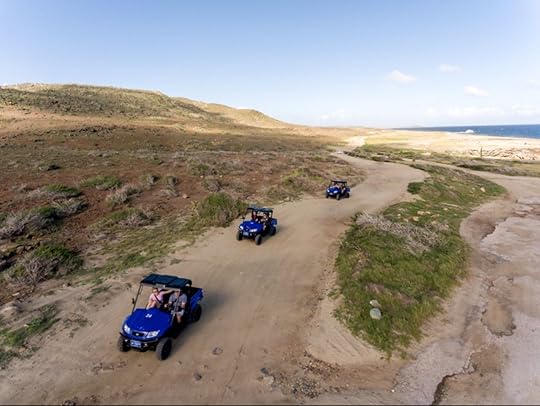
Photo: Aruba Tourism
Aruba might be a tropical island, but much of its geography will make you feel like you’re in a far-flung desert. The island’s northern coast, and the Arikok National Park to the east, are defined by craggy rock formations, prickly cacti, and hidden natural pools. Arikok, which comprises 18 percent of the small island’s total landmass, lies just 25 minutes from the resorts of Palm Beach and 15 minutes from the capital of Oranjestad. The best way to experience Aruba’s rugged terrain is by renting an off-road vehicle and forging your own path through the wilderness.
ABC Tours Aruba offers Jeep tours and UTV rentals, so you can explore all the island’s stunning geography. As you skirt the jagged coast, you’ll see the iconic Twin Bridges rock formation, the hidden Cave Pool (great for cliff diving), and the Bushiribana Ruins — a relic of Aruba’s mid-19th-century gold rush. Ten minutes from the town of Noord, the California Lighthouse towers over a sweeping ocean vista, marking a popular viewpoint for travelers and a great place to start your adventure along the coast. You won’t be flying blind, either. The guides are extremely knowledgeable and will teach you everything you need to know about the island’s sights and history — and make sure you don’t crash.
Master a water sport.
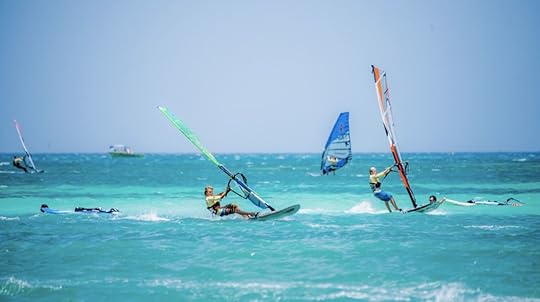
Photo: Aruba Tourism
After a full day whipping around Aruba’s rugged backcountry, you’ll be ready to hit the water. If you’re already a watersports pro, there are tons of rental opportunities on Palm Beach or Eagle Beach. But if you’ve never stood on a paddleboard before, or have no idea what the words “tack” and “rig” mean, the folks at Vela Aruba have you covered. Located right on Palm Beach, steps from the Aruba Marriott, these water sports experts will let you try out paddleboarding, windsurfing, kitesurfing, or kayaking — no matter your skill level. Yeah, you’ll probably fall a few times, but at least the water’s warm. Even in January it rarely dips below 78 degrees.
Set sail.
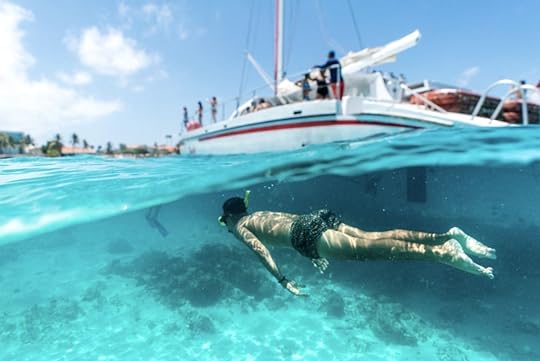
Photo: Aruba Tourism
Many tourists spend the day on a resort beach, watching the sailboats and catamarans from afar and thinking, “Hey, this is a pretty cool view.” Well, nothing beats the view from the boat itself. To get a better perspective on the island, board a sailboat or catamaran and cruise around Aruba’s coast. Based in Oranjestad, Tranquilo Charter Cruises will take you on a seaborne adventure around the island — and they don’t skimp on the snacks or booze. You’ll sail past shipwrecks, private islands, and beaches like the famously quirky “Flamingo Beach” on the Renaissance Hotel’s private island where flamingos roam free.
You don’t have to worry about getting cabin fever, either. About halfway through the trip, the boat will dock at a secluded reef island for snorkeling. The reef is full of stunning coral formations and marine life like bluefish and rainbowfish. You might be a few rum punches deep at this point, so don’t forget to watch out for jellyfish.
Indulge in local cuisine.
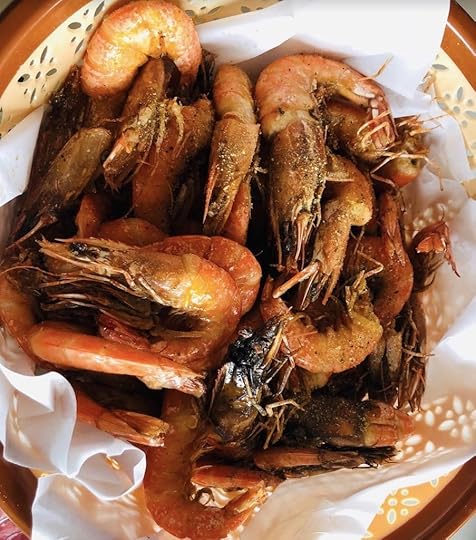
Photo: Aruba Tourism
Being adventurous doesn’t only apply to outdoor pursuits; Aruba’s cuisine features lots and lots of freshly caught fish, many of which tourists won’t find in their grocery stores back home. At Mariott’s beachside Atardi restaurant, you can bury your feet in the sand and chow down on Macadamian Grouper or dine on seafood chowder at Papiamento Restaurant under a canopy of palms. Zeerovers, a local favorite, has the best shrimp on the island (if you don’t mind de-shelling them yourself), and its menu is a godsend for the indecisive eater. There are only two options: shrimp and the catch of the day, which could be kingfish, wahoo, snapper, or for the truly daring, barracuda.
When you’ve had your fill of fish, you can move onto some of Aruba’s signature non-surf dishes. Keshi yena, a traditional Dutch meal, consists of a baked ball of cheese stuffed with spiced meat, and it’s considered by many to be Aruba’s national dish. For a lighter snack try pastechi, a fried pastry filled with gouda, or a sweet side of fried plantains.
Whether it was the extreme sports or the words “fried gouda” that got you pumped up to escape the harsh weather and book that winter vacation, you can customize your own Aruba adventure at Aruba.com. 

More like this: The 15 best undiscovered beaches in the Caribbean
The post Aruba is the most adventure-packed island in the Caribbean appeared first on Matador Network.

Motorbike routes in Southeast Asia

Southeast Asia has some of the world’s most stunning scenery — massive mountain ranges, dense cloud forests, tea plantations, and tiered rice terraces — and the best way to explore it is to rent a motorbike and hit the road.
But before you hop on a bike in an area of the world where the roads are busted, the traffic out of control, and the driving rules hardly respected, take a motorbike driving lesson, get an international driving permit, and a health insurance plan that will protect you in case you have an accident. Also, be sure to pick up a local SIM card and load it up with data so you can access Google Maps from the road, because you will get lost and need all the help you can to find your way. If you’re terrified of driving a motorbike, just hire a local driver and enjoy the views from the back. Here are seven of the most amazing motorbike routes in Southeast Asia that will get you stoked for a two-wheel road trip.
1. Ha Giang Loop, Vietnam
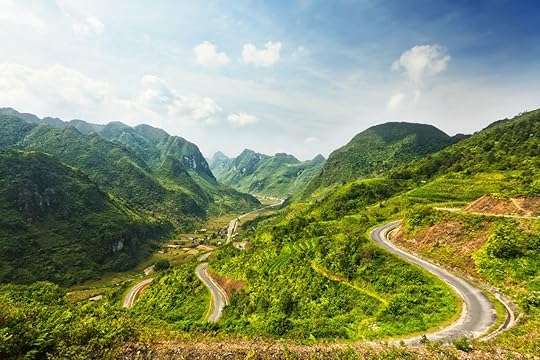
Photo: Khoroshunova Olga/Shutterstock
Travelers in Vietnam flock to Sapa to stroll through rice terraces among water buffalo, making the place way too busy to be enjoyable. Skip it altogether and head further north to the mountainous province of Ha Giang, which is widely underrated.
In order to help conserve the culture here and prevent the over-tourism problem that’s taking place in Sapa, it’s crucial to visit Ha Giang responsibly. I did the Ha Giang loop for four days with the local YESD community-based tour company, which I found on I Like Local. I only stayed in locally owned and operated guesthouses and homestays, which ensured that my tourism dollars went straight into the community.
The route is well marked on Google Maps, but note that the road and the weather change drastically with the topography of the region, so be ready to encounter rain and steep terrain. Along the way, the views are breathtaking, but it’s not wise to go trekking due to leftover mines from the Vietnam War. Also, most of the land in the area is private farms that cultivate corn or rice, so don’t go crushing people’s crops. Instead, hike up to the Lung Khuy cave. Be sure to stop for a Vietnamese coffee at Heaven’s Gate, a panoramic lookout point.
It’s best to do the Ha Giang loop solo during the dry season. The weather will be hot, and it won’t be as green, but the risk of being caught in storms, mudslides, or rock falls will be minimal.
2. Bolaven Plateau, Laos

Photo: Jesper olsson/Shutterstock
The Bolaven Plateau is a lush area in southern Laos with many waterfalls and coffee plantations. This part of the country was badly damaged during the Vietnam War, and there are still many UXO (unexploded ordnance) in the ground, so don’t venture off on unmarked trails should you ditch the bike and want to hike for a bit.
If you only have time for a day trip you, can easily visit Tad Fane twin waterfalls — you can even zipline around the park that surrounds the falls. Nearby is the Tad Yuang waterfall. During the dry season, you can swim in the pools of water that gather above the fall, but be wary of doing this during the wet season as the current is stronger than it appears. Visit the Bolaven Plateau Coffee Producers Cooperative Cafe to learn about coffee cultivation in the area and tour the farm. During the off season, they make bamboo straws.
There are two loops that go around the Bolaven Plateau. Both start from Pakse where there is an international airport. The short loop takes most people two to three days. The roads are good quality, and the sights are clearly marked along the way, making it more enjoyable. Be sure to grab a paper map of the route as cellular signal and Google Maps may not always be accessible. You can stay in a homestay the first night in Tad Soung and see some nearby waterfalls. The following day, drive towards Paksong where you can learn about mining history in the area.
The big loop can take up to five days and occasionally goes off-road. The big draw of the larger loop, beyond an epic adventure, is the chance to visit Tad Tayicseau, which has seven amazing waterfalls. Unlike the waterfalls earlier in the loop, to reach the cascades in this area you’ll have to hike through well-marked trails. This covers all the highlights of the Bolaven Plateau.
3. Mae Hong Son Loop, Thailand

Photo: apiguide/Shutterstock
No trip to Thailand is complete without visiting Chiang Mai and Pai in the north, so rent a motorbike to get between the two and see some incredible nature, remote Buddhist temples, and a waterfall or two along the way. The famous route that goes between the two northern Thai cities is known as the Mae Hong Song Loop. You can take this route quickly in a day, or spread it out over almost a week to see all the sights.
You may take the Mae Hong Son Loop either clockwise or counterclockwise from Chiang Mai. Counterclockwise is a more direct route to Pai, but the terrain is a bit more difficult. Start out easy by going clockwise on the Mae Hong Song Loop by following this Google Map. The most noteworthy stop is Doi Inthanon, the tallest mountain in Thailand. Doi Inthanon National Park has waterfalls, gardens, temples, and even a mossy forest that travelers should take the time to check out. Along the way on Mae Hong Song, you’ll be able to make pit stops to explore local crafts villages, dip into hot springs, and have some roadside snacks.
4. Hai Van Pass, Vietnam

Photo: Nguyen Duc Hieu/Shutterstock
The Hai Van Pass is a scenic route in central Vietnam from the coastal city of Hoi An to the imperial center of Hue. This Google Maps route is a great one to follow. The ride will take you weaving through mountains and past picturesque bodies of water. The road is very safe, too. If you don’t want to drive your own motorbike, you can head out with Hoi An Motorbike Adventures with a professional driver who will also serve as your local guide to show you cool spots.
There are many places to check out along the way on the Hai Van pass, such as war bunkers, the pristine Lang Co Beach, Lap An Lagoon where oysters are cultivated, and farms where water buffalo graze. The actual Hai Van Pass is only 13-miles long but can be explored from anywhere from an hour to a full day depending on what you want to experience.
After the pass ends, before you reach Hue, you can cool off at the Elephant Springs. Here, locals have turned a riverbed into a series of pools full of crystal-clear freshwater. Before you reach Hue, stop by the An Bang ghost town to admire the massive tombs built to honor wealthy Vietnamese who’ve left this world. The Vietnamese believe you must take your worldly possessions with you to the afterlife, so many of the mausoleums include kitchens and bedrooms.
5. Kuching, Borneo, Malaysia

Photo: Ricky Kresslein/Shutterstock
Kuching is the capital city of the state of Sarawak in the Malaysian portion of Borneo. The area is rich with incredibly diverse flora, wildlife, and culture.
Pick up a motorbike the night before in Kuching. Wake up with the sun and grab a bowl of laksa with the locals before zipping past cat statues and incredible mosques as you head out towards Bako National Park. You’ll have to leave your bike at the riverside and take a boat out to the park, but the parking attendants will make sure it’s safe. At Bako National Park, you’ll be able to see wild bearded pigs and the endangered probosci long-nosed monkeys.
Afterward, head back to the mainland and drive through the dense jungle to the Semenggoh Wildlife Centre for the afternoon feeding, usually at 1:00 PM. The orangutans here are semi-wild, so there’s no guarantee you’ll see them, but you’ll be able to learn about their habitats and the threats to these endangered primates.
Spend the afternoon exploring Kuching’s many caves — the Fairy Cave and Wind Cave are incredible, just make sure you bring a flashlight. Afterward, continue to cut through the lush mountains until you reach the Bidayuh Annahrais Longhouse. Here you’ll learn about the tribal people of Borneo and even have the chance to stay overnight in a traditional homestay.
6. Munduk, Bali, Indonesia

Photo: Tony Prince/Shutterstock
If you’re one to chase waterfalls, this is the Southeast Asia motorbike route for you. The northern section of Bali has many waterfalls, most of which can be easily reached by road. This map from Google Maps will help you create an itinerary, but you’re sure to discover a few others by paying attention to signs and asking locals where to find off-the-beaten-path cascades.
All of the falls could easily be seen in a day, but it’ll be more enjoyable to split the waterfall motorbike route in Munduk into two days and spend the night in a local village. Be sure to pack a swimsuit as it’s possible to swim in most of the falls.
The must-see waterfalls include the Banyumala Twin Waterfall, which has a few cascades within the park. The easiest to reach is Pucak Manik Waterfall. Git Git is one of the most popular waterfalls but can be tricky to find. Not to worry: There are so many waterfalls in the area that you’re sure to come across one.
Beyond waterfalls, you’ll have the chance to see farmlands, stunning views of the rolling hills of northern Bali, Hindu water temples, and interact with locals as this area is mostly tourist-free. On a clear day, you’ll be able to see the three mountains — Agung, Batur, and Batukaru — and all the way to the northern coastal town of Lovina.
7. Palawan, Philippines
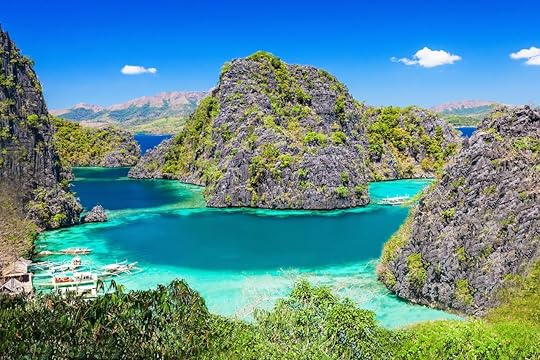
Photo: saiko3p/Shutterstock
Beach lovers won’t want to miss the chance to rent a motorbike to traverse from Puerto Princesa to El Nido on the Philippine island of Palawan. The route is straightforward and easy to follow. It should take just four hours if you follow this Google Maps.
But, as this is one of the most beautiful islands in the world, you’re sure to want to hop off to enjoy the scenery or a swim every once in a while, so plan for a full day trip of about 10 hours. There are plenty of beachside towns along the way if you need a refreshing drink or snack. San Vicente is the place to stop for transparent water and white sand at Long Beach’s nearly 9.5-mile stretch of shore. San Vicente is about a halfway between El Nido and Puerto Princesa, so if you were going to stay somewhere overnight, this is the spot.
If you want to keep driving, go for it. The road that cuts across Palawan is very well maintained and stretches for 280 miles. 

More like this: The 7 most overlooked destinations in Southeast Asia you need to visit
The post 7 incredible motorbike journeys in Southeast Asia appeared first on Matador Network.

Hang gliding without harness mishap

Imagine finally mustering the courage to go hang gliding and then realizing your instructor forgot to attach the safety harness. That’s exactly what happened to Chris Gursky, an American on Vacation in Switzerland. He certainly got his wish of cruising through the Alpine air, but he probably didn’t enjoy the scenery as much as he hoped. The moment his hang glider left the ground, he realized his harness wasn’t properly attached and found himself hanging on by his fingertips as he soared through the air at 25 miles per hour. “I looked down once and I thought to myself, so this is it,” Gursky told Good Morning America. “I’m going to fall to my death.”
During the course of the harrowing flight, which was captured on video, the instructor tried to steer to a quick landing but struggled to control the glider. Despite the instructor’s attempts to land, the glider only soared higher and higher, until the country homes looked like colorful specks. Hanging on for dear life, Gursky managed to maintain his grip until the abrupt landing. While he did escape with his life, he sustained a fractured wrist and torn tendon, which required surgery.
Despite the flight probably being the longest four minutes of his life, Gursky still insists that he wants to glide again. 

More like this: 5 extreme sports for people who hate to go outside
The post Hang glider takes off without his safety harness attached, hangs on for dear life appeared first on Matador Network.

No phone for a free meal promotion

If you’ve ever been out to eat and wished your lunch buddy would put down their phone, you might want to start bringing them to Frankie & Benny’s. UK-based Frankie and Benny’s is running a voluntary “No Phone Zone” promotion where a box will be provided for adults to deposit their phones prior to the meal — if they so wish. Participating families will receive free children’s meals as an incentive.
The promotion was inspired by a study — commissioned Frankie and Benny’s — showing that children wish their parents would spend less time on their phones. Of the 1,500 families surveyed, 25% of parents admitted to checking their phones during family meals and 10% of children say they have attempted to hide a parent’s phone to encourage real conversation.
“We looked at various ways we could encourage people to engage more at the dinner table,” a spokesman for the restaurant chain told BBC News, “and we’ve found giving families the chance to part with their devices for a mere couple of hours is a great way to bring them closer and embrace family time.”
It remains to be seen whether or not patrons are willing to part with their beloved phones, but a successful run at Frankie and Benny’s could encourage other restaurants to try similar tactics. The promotion will run on a trial basis from November 29 to December 7 with the possibility of becoming permanent if successful. 
H/T: BBC News

More like this: I’m a millennial who does not own a cell phone. Here’s why I think it makes my life better
The post This restaurant will give you a free meal in exchange for putting down your cell phone appeared first on Matador Network.

Hyde Park dog event for Christmas

If you’re looking for a break from the traditional Christmas celebrations — the tree lightings, Santa parades, gingerbread bake-offs, etc. — the Hyde Park Sausage Walk taking place next month will be the perfect breath of fresh air. The Sausage Walk will gather hundreds of dachshunds dressed in their favorite holiday sweaters in London’s Hyde Park for a truly magical Christmas celebration. As you can see from previous years’ photos, the outfits of the dogs, as well as their owners, tend to get pretty creative as everyone is trying to get the prize for best dressed.
View this post on InstagramA post shared by Winston the mini dachshund (@winstonminidachshund) on Nov 25, 2018 at 9:55am PST
View this post on InstagramA post shared by Winston the mini dachshund (@winstonminidachshund) on Oct 29, 2018 at 9:05am PDT
View this post on InstagramA post shared by Bun (@bun_thesausagedog) on Oct 29, 2018 at 5:46am PDT
You can fling yourself headfirst into the festivities by dressing up and bringing your own dachshund, or you can just come to observe. The event will take place on Sunday, December 16, starting at Italian Gardens Cafe before proceeding to a larger space in Hyde Park where the dogs can play. It will run from 11:00 AM to 1:00 PM, and admission is free.
For updated event details and pictures from previous sausage walks, visit the event’s official Instagram. 
H/T: Secret London

More like this: The 7 best places in the world for dog lovers
The post Hundreds of dachshunds in Christmas outfits will gather in London next month appeared first on Matador Network.

Vlogger on Malaysia Airlines flight
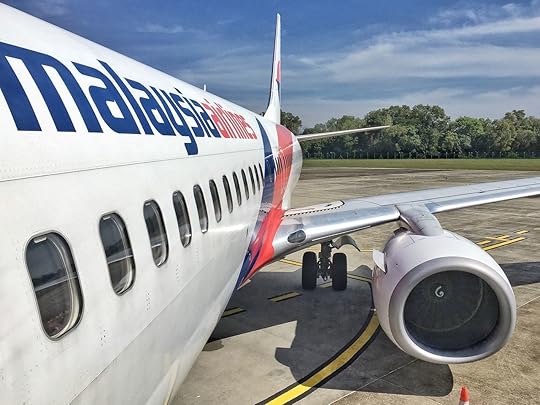
If you’re going to complain about your flight crew online, you should probably wait until after you’ve landed. Josh Cahill, a travel vlogger with 53,000 YouTube followers and 24,000 Instagram followers, often reviews his travel experiences for his audience, and this flight from Kuala Lumpur to London was no exception. In an Instagram picture posted during the flight — in which he tagged Malaysia Airlines — Cahill expressed his displeasure, calling the flight the most disappointing of the year and complaining about the unfriendly crew and “dreadful food.”
By posting the negative Instagram review in real time, however, he probably didn’t consider that the crew would actually see it and be less than impressed. According to Cahill, when the captain and crew found out about the Instagram post, they took their revenge by intentionally skipping him when passing out water and only serving him food when he promised to stop filming (which he continued doing anyway).
Although upon landing he was met by a representative for Malaysia Airlines, who apologized for the poor service, Cahill still considers this “a very humiliating experience.” He took to YouTube to air his complaints even further, and the video already has nearly 500,000 views. 
H/T: The Daily Dot

More like this: Flight attendants confess things like sex on planes and watered-down drinks in a new survey
The post A passenger roasted Malaysia Airlines online mid-flight, and the crew retaliated appeared first on Matador Network.

What to know about Canada’s cannabis

In June of 2018, Canada’s government voted to become the largest country to legalize recreational marijuana, and the first cannabis sales officially started on October 17th. According to some bank estimates, legal weed will add as much as $8 billion to Canada’s economy from locals and tourists curious in partaking in an activity that’s illegal in most of the world (and is still illegal for some foreign nationals in Canada).
With all the hype around Canadian cannabis, you might think it’s prime time to start planning a visit. But there are some things to consider before you buy a plane ticket. To get a handle on the advantages and challenges of legal recreational weed in Canada, Matador Network caught up with two leaders in the cannabis space: Smoke Wallin, the president of the multi-state US cannabis company Vertical, and Jon Brandon, the co-CEO of Foria Wellness, a cannabis company that sells products around the world.
Here’s what you need to know before traveling to Canada for legal weed, and why it may not be the free-for-all you imagine.
Canada doesn’t have the variety that recreational US states do.
Whereas Canada is just getting things going with recreational cannabis, some states in the US have been setting up a marijuana market since 2012. That was the year Washington and Colorado became the first states to legalize recreational weed, and eight more states and Washington, DC have since joined them. Some areas are more open than others and each state has its own recreational cannabis rules, but most are a step or two ahead of where Canada is. For one thing, Canada only legalized smokable marijuana, not edibles, and suppliers in the country are running low on the cannabis they can sell.
All of this means legal US states may be a better option for people interested in traveling to cannabis-friendly locales.
“There are so many options in the US to go to a legal recreational state and have access to a full range: edibles, beverages, pens,” Wallin said. “If someone wanted to go as a tourist to get cannabis or experience cannabis, they’d do it in California, or Colorado, or one of the other major states with legalized recreational adult use.”
Regulations and available products will, however, improve with time.
“While it is expected that additional product formats (including edibles) will be permitted in the future, there are currently allowable product formats that can help satiate the needs of consumers,” Brandon said.
It’ll take some time for Canada’s recreational shops to open.

Photo: Doug McLean/Shutterstock
The physical shops themselves also have to be set up in Canada. It’s a work in progress, Brandon said, and “in certain provincial markets, recreational shops are already up and running, and there will be more opening soon.” Canopy Growth is one company that already has nationwide distribution as well as a cannabis education program.
If the rollout in the states is anything to go by, though, it could be a while.
“[It’s] going to be a staggered rollout,” Wallin said. “Canadian provinces have to decide each set of rules, so in some cases it’s state-owned and in others, they’re licensing. It’s going to take the next 18-24 months for a lot of these provinces to build out a fully functional retail system that’s A, not running out of product, and B, has enough stores to service the market.”
There will still be a learning curve for curious new consumers.
Brandon said the three biggest challenges to Canada’s cannabis market are, “shaking the stigma associated with cannabis for decades, education, and consistent supply.”
Part of that education is knowing which cannabis brands are available and which are the best to try. That might be a little tricky. Canada’s Cannabis Act prohibits promoting cannabis “by means of a testimonial or endorsement,” and “by means of the depiction of a person, character, or animal, whether real or fictional.”
“The restrictions are so significant with branding and marketing around products that it severely limits anyone’s ability to communicate with consumers on differences in brands and educate them on one brand or another,” Wallin explained. “It’s a limited market to able to communicate with consumers. Those restrictions directly dissuade casual consumers, because without the ability to market brands and features and benefits, it’s difficult to get that casual consumer to understand what to buy and why.”
There are other places more ready for new cannabis consumers.
“Colorado and California are much more user-friendly markets because of the multitude of form factors and ability for brands to differentiate themselves,” Wallin said. “Until Canada offers more form factors and loosens restrictions on marketing, it will be forever at a disadvantage.”
Canada’s major cannabis regions aren’t clearly defined yet.
With other legal regions not too far from Canada (Washington shares a full border), Canadian cannabis will primarily be for locals. Canada is a geographically large country, though, and each region is approaching legalization differently.
“Locally, the west is Canada’s most mature cannabis market already, while Ontario in the east represents the largest population,” Brandon said. “Having said that, certain metrics indicate that, locally, Nova Scotians are purchasing the greatest amount of cannabis. Pricing and product availability will greatly dictate velocity initially.” 

More like this: Everything to know before going to a state with recreational marijuana
The post Why you should wait before booking a Canada cannabis trip appeared first on Matador Network.

Why you should go skiing in China
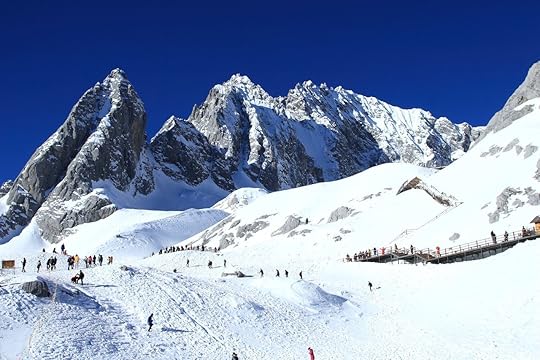
China is not the first country that comes to mind when you think about skiing or snowboarding. That’s changing, though. The rising Chinese middle class is looking for new ways to spend their time and money, and they’ve discovered snow sports. Beijing has also been working overtime to develop its ski industry ahead of hosting the 2022 Winter Olympic Games. And China has no shortage of mountain ranges in the middle of the country and along its many borders; in fact, China’s outer regions may be where skiing first began 10 thousand years ago. Check out China’s ancient — and also brand new — skiing culture.
Rapid growth in the ski industry
China has 12 million skiers, just over 700 ski resorts, and the trend lines point upwards. Growth in ski resorts has been nearly nine percent annually in recent years, and visits to those resorts have increased even more.
When you hear about Chinese skiers, though, there are two big stories. One is the growth of the market and the rise in number of skiers, all heavily supported by government policy. That’s great for equipment vendors. But the newness of the sport in China means that many ski areas are geared to beginners, which is not ideal for advanced skiers and snowboarders.
But there’s more. Even if experienced Chinese skiers with enough money still tend to prefer skiing trips abroad, resorts near North Korea are catering to wealthy clientele. And new ski resorts in China’s border regions don’t just reveal the contrast of ancient cultures against China’s dogged drive to modernize. They may well be where humans first took to skis.
The Wild East of skiing
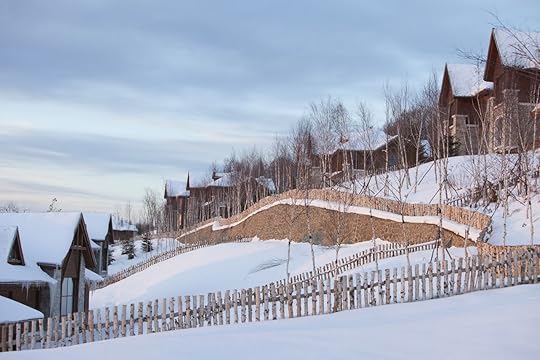
Photo: Yaorusheng/Shutterstock
The Alps or Rocky Mountains have an established skiing culture — it’s all well groomed, big on après ski, and expensive.
In China, on the other hand, it’s the Wild West — or East, rather — of skiing. Resorts rushing to fill the newfound interest in skiing have popped up near urban centers around north-central China — where mountains are low, and snow is scarce. In these local resorts, skiing is more of a novelty than a serious athletic pursuit. It’s an adventure for people who may not have previously sought outdoorsy activities.
At resorts farther from cities, China has not yet settled on an ideal development model. Some offer up kitschy renditions of Alpine cottages while others house skiers in monolithic, multi-story hotels. The hope is that with the coming Olympics, newly developed ski areas will find a more authentic and eco-sensitive approach to its emerging ski areas.
China ramps up ski resorts for the Olympics

Photo: Yuangeng Zhang/Shutterstock
Beijing will soon be the first city ever to have hosted both the Summer and Winter Olympics when it hosts the 2022 Winter Games. In preparation, the country has been building up ski areas and the transportation routes to get there as fast as possible. China says construction at venues such as those in Yanqing and Zhangjiakou is sustainable and that new buildings will better fit into the existing natural conditions.
Others claim that construction has re-sculpted mountain slopes and razed entire villages — literally moving out villagers and replacing those villages with a blank canvas of dirt — to make room for the Olympic venues. One thing is certain given China’s willingness to spend any amount of money to ensure successful Olympic Games: The ski areas closest to Beijing will get an impressive upgrade. And the promised high-speed rail lines will cut the time to get to there to less than an hour.
Yanqing, the closest ski venue at only 50 miles from Beijing, will be one site for the 2022 Winter Games. The Shijinglong ski resort there only has seven lifts — most of which are currently drag, or “poma” lifts — and reaches only 2,600 feet above sea level. Nonetheless, it’s set to be the location for the Alpine ski races and will rely solely on man-made snow if need be.
A more developed resort lies in Hebei province about 40 miles from Zhangjiakou, another future Winter Olympics location. The Wanlong Ski Resort lies between 5,000 and 7,000 feet above sea level, offering skiers a vertical drop of over 1,800 feet. To date, it has 22 slopes catering to all levels of skiers, including some professional teams who race on its FIS-certified pistes.
Chic ski areas next to North Korea

Photo: HelloRF Zcool/Shutterstock
While the ski scene near Beijing is just emerging, resorts in the Changbaishan mountain range at the border between China and North Korea are currently the most established in the country. In addition to groomed slopes, you can find some good backcountry options. International hotel chains like Park Hyatt and Sheraton are here, with the prices and amenities you’d expect from those brands.
The best-rated ski resort in the Changbaishan range is Yabuli Sun Mountain in Heilongjiang province. It offers 22 miles of tracks at elevations between 1,480 and 4,500 feet, reached with eight ski lifts. In neighboring Jilin province, the Wanda Changbaishan International Ski Resort also has hotel chains like Sheraton, Westin, and Holiday Inn, and 14 distinct slopes with varying levels of difficulty.
You can reach higher parts of the Wanda Changbaishan mountain by snowcat. If you’re a good enough backcountry skier, you’ll find opportunities for dropping some interesting lines — but you’ll have to figure out where this is possible. Snowcat drivers will want everyone to go down the established slopes, and you certainly wouldn’t want to end up on the North Korean side of the mountain.
Steep, culturally unique slopes along China’s borders
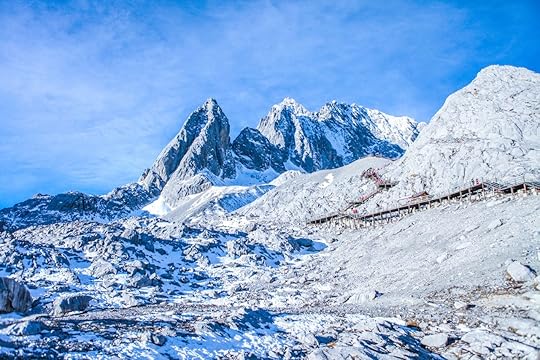
Photo: Viroj Phetchkhum/Shutterstock
More far-out ski experiences are possible in the outer provinces of China. Beyond the resorts on the border with North Korea, the natural mountainous barriers that have separated China from other countries have also become locations of new ski areas.
South in Yunnan Province next to Myanmar, Yulong Xueshan — or Jade Dragon Snow Mountain — is the southernmost glacier of the Northern Hemisphere. It’s a fascinating mountain close to the pretty, albeit touristy, old town of Lijiang. The glacier now has a ski resort, which is small but which can take skiers up to a dizzying altitude of 15,000 feet.
On the opposite side of the country, due north in the province of Inner Mongolia, is the Alshan Alpine Resort. Alshan Skiing Resort has two different areas: a smaller Western one for ski race training and a larger Eastern one just for snow fun. A hot spring area is also located here.
East of there, in Xinjiang province bordering Kazakhstan, lies the Tianshan International Ski Resort. Tianshan Ski Resort lies 50 miles from Urumqi at elevations around 6,500 feet with a vertical drop in some slopes of almost 4,000 feet. The longest piste here is over a mile. Both the Alshan Alpine Resort and the Tianshan International Ski Resort are in parts of China where the landscapes are wilder than in the heartland, with locals who are ethnically and culturally distinct from the country’s majority Han Chinese.
The real birthplace of skiing

Photo: outcast85/Shutterstock
Xinjiang may in fact be where skiing was invented. Stone Age cave paintings there show hunters using skies to stalk their prey, and ethnic groups of the region still have such a tradition. The oldest cave painting of a hunter skiing found here is 10,000 years old, suggesting that this region may have predated Scandinavia as the birthplace of skiing.
Ethnic Kazakhs and Mongols in these outer provinces still use the skis and are weary of China’s ethnic Han calling China the birthplace of skiing. On the one hand, interest in such history and modern ski adventure offerings raise the status of the region and its people. On the other hand, such developments tend to go together with a loss of traditional culture.
Skiing on sacred mountains

Photo: hxdyl/Shutterstock
Skiing can also lead deeper into a China that is still very connected with traditions, yet rapidly changing — the best example of that is Emei Shan.
Emei Shan in Sichuan Province, in the center-south of the country, is the westernmost of the Four Sacred Buddhist Mountains of China. As such, it holds deep religious significance, reflected in a large number of temples on it. At the same time, since the mountain offers the possibility of skiing relatively close by Sichuan’s capital Chengdu, a skiing resort has been established there. So how about some spiritual skiing, spending part of the time on slopes and part visiting sacred sites?
Perhaps one of the most controversial possibilities would be if the Tibetan Himalayas were to be developed into a skiing destination since that region has struggled unsuccessfully for independence. China has announced it will be building the world’s highest ski resort near the Tibetan capital of Lhasa — which is better thought of as the spiritual home of Tibetan Buddhism. 

More like this: The rumors are true: Japan gets tons of snow
The post China is becoming a serious ski destination. Here’s how. appeared first on Matador Network.

Things Wisconsinites never say

As Wisconsinites, you’ll hear us rave about the Packers’ latest NFL win and we’ll never let you forget that we make America’s best cheese. But there are some statements you will never hear us mutter. Here are 17 things you’ll never hear someone from Wisconsin say.
1. “I don’t like football.”
Wisconsinites love football with an almost religious fervor. Whether it’s the Badgers or the Packers, game days call for red-and-white-striped overalls or giant cheese-shaped hats.
2. “Excuse me, sorry.”
Here we say, “Ope, sorry ‘bout that.”
3. “What’s a brat?”
Brat Fest is not the world’s largest celebration of kids with attitudes. It’s a three-day party in honor of our favorite food — the bratwurst.
4. “Go Vikings!”
This is the fastest way to get yourself kicked out of someone’s house on game day. That said, a real Wisconsinite will always mention the Vikings’ lack of Super Bowl wins.
5. “I wish winter would last longer.”
Our cold, dark winters last from October to March. When the sun finally shines and temperatures rise above freezing, it’s like the whole town has woken up from a deep hibernation. Everyone is outside soaking it in.
6. “Thanks for offering, but no, I don’t want a beer.”
When we have guests over, we offer them a Miller Lite. If they’re from Wisconsin, you bet they’ll crack one or two open with you.
7. “Go Bears!”
This is the second-fastest way to get yourself kicked out of someone’s house on game day.
8. “These cheese curds are too squeaky.”
This is what most outsiders will say when they feel that distinctive glide over their front teeth and hear the squeak that goes along with it. Those in the know are well aware that the squeakier the curd, the fresher it is.
9. “Let’s just have one drink, sit by the lake, and talk.”
No, we’re drinking a case and having a bag tournament by the lake. We love our 15,000 plus lakes, and a competitive day of drinking games on the banks is one of the best ways to enjoy them.
10. “I love soy milk.”
Born and raised on full-fat dairy, most likely from a farm up the road, many Wisconsinites probably haven’t ever tasted soy milk, much less prefer it.
11. “Go Lions!”
Just no.
12. “McDonald’s is better than Culver’s.”
ButterBurgers, cheese curds, and custards — there’s no alternative.
13. “It’s too cold to go ice fishing.”
There are very few things cold weather can stop Wisconsinites from doing. With a heated shack, ideally pimped out with a TV and plenty of space for beer, the cold won’t be a problem.
14. “Where’s the nearest water fountain?”
When we’re thirsty, we find a bubbler.
15. “I don’t know anyone who works at Epic.”
Everyone knows someone who works at Epic. Chances are that your high school valedictorian or college roommate went on to work at the “Intergalactic Headquarters” — with a staff force that outnumbers the population of the town it’s in.
16. “House on the Rock is not weird at all.”
With more shag carpet than you thought still existed, an expansive collection of Santa Claus memorabilia, a carousel of mannequins, and a room with a life-size sculpture of a blue whale, House on the Rock is one of the strangest places you’ve ever been. But you’d be lying if you said you didn’t love it.
17. “It’s Friday — let’s have a salad for dinner!”
You can bet we aren’t frying up broccoli florets. It’s called Friday Fish Fry for a reason. A big cut of fried walleye or perch with an even bigger heap of tartar sauce is what Friday is all about. 

More like this: 8 things you should know before dating a Wisconsin guy
The post 17 things you’ll never hear a Wisconsinite say appeared first on Matador Network.

November 27, 2018
Naturopathic remedies for travelers

In preparation for your next adventure, besides visiting your general practitioner or a travel clinic for travel health tips and tools, it’s also worth putting together a list of natural treatments to complete your healthcare checklist. Many of the health risks encountered during travel can be treated with simple and natural home remedies. Here’s a list of natural treatments to supplement your travel health kit that you can usually find at your local health food store, make yourself, or find easily on the road.
Hand cleanser
Included in the first line of defense for staying healthy as you travel is keeping your hands clean throughout the day, especially before eating and following extra exposure to grime. A travel-sized natural cleanser can be found at most health food stores. If you’re unable to get your hands on sanitizer, essential oils such as cinnamon and tea tree oils blended with aloe vera gel are solid options for a homemade remedy.
Immunity boosters
The bustle of travel, exposure to unfamiliar pathogens, and crowded places all put travelers at risk of contracting an illness. Feeling slightly run-down or downright ill will put a damper on all your travel plans. Protect yourself with natural preventive remedies. This category has loads of options, including zinc, vitamin C, and elderberry. Pack your usual effective go-to from home in your travel health kit. Don’t forget simple kitchen medicine, such as garlic, when your immune system feels threatened.
Probiotics
You can start taking these in advance of your travels, especially if you will be taking antibiotics (leave several hours between these two as they work against each other) or if you have sensitive digestion. Probiotics help build up the natural healthy bacteria in your gut to counterbalance any potential influx of unwelcome bacteria.
Not all probiotic products are created equal. Seek out a reputable brand, ideally with some professional guidance for your personal needs. Many probiotics require refrigeration, so seek out a shelf-stable pill option appropriate for travel. These can be found at a good-quality natural food or supplement store, not necessarily at the local small-town pharmacy that you might encounter when on the road. Yogurt, miso, sauerkraut, and other fermented foods also offer lower-dose probiotic support.
Tummy helpers
Digestive upset, ranging from mild discomfort to constipation or debilitating diarrhea, is one of the primary threats for travelers. A bout of food poisoning can keep you in your hotel close to the loo, or worse, put you in the hospital for the entire tenure of your planned vacation. It’s worth being overly cautious about digestive health as a traveler, especially if you tend to have a sensitive digestive system or if you like to eat adventurously when you travel.
Be prepared to keep things moving in the right direction, including bowel stimulators, such as Smooth Move tea and fiber, as well as bowel slowers, such as activated charcoal. Digestive enzymes can be helpful if you tend to have trouble digesting specific types of foods. Nausea soothers, such as ginger candies, are good to have on hand if you tend to get motion sickness.
Essential oils
A few key essential oils can be used for a wide variety of applications, including just serving as a pleasant scent to freshen up stale air (or as an attempt to cover up unpleasant smells around you). Lavender calms and relaxes the nervous system, useful if you tend to get travel-day jitters. Eucalyptus oil helps soothe achy muscles and clears the sinuses. Tea tree oil benefits the skin in many ways, including reducing acne, nourishing a dry scalp, and treating skin infections. Many essential oils are too potent to apply directly to the skin and require a carrier oil, such as the next item on the list, coconut oil.
Coconut oil
A great all-purpose tool to have on hand, useful for hydrating dry skin and hair, preventing infection, even cleaning your teeth! Coconut oil can be used in the ancient Ayurvedic medicine practice of oil pulling, the process of swishing oil in the mouth for several minutes to support oral health and to absorb the nutritional benefits of the oil (don’t swallow the oil, though, spit it out when done). This multipurpose oil is a key ingredient for lots of homemade bath products, including shampoo, conditioner, lotion, and lip balm — a great option if you are unsure about where to find familiar products while on the road. Coconut oil also serves as a base for potent essential oils, many of which are too strong to put on skin directly.
Skin soothers and protectors
It’s good to be prepared for a wide variety of skin ailments while traveling, ranging from dry skin to sunburn to fungal infections. Coconut oil, as already mentioned, is a great overall skin soother and protector. If you have the propensity to sunburn, be sure to carry aloe vera. Calendula and neem offer skin treatment for scars, itching, and healing of minor wounds. And don’t forget sunscreen or block when heading outside. Remember, the intensity of the sun can be quite different from what you are used to at home — especially if traveling near the equator, visiting mountains, or spending hours near water or snow.
Muscle pain relief
Aches and pains are to be expected on any great travel adventure, even if just sore feet following a long day of sightseeing. Equip yourself with muscle soothers such as arnica, Tiger Balm, and soothing essential oils. Don’t underestimate the benefits of a simple, effective, and cheap ice pack or hot water bottle for minor aches and pains.
Sleep support
To support and enhance a good night’s sleep (or satisfying nap) on your travels, pack a few natural sleep aids. Melatonin pills or drops can help you conk out for a stretch of several hours of sleep — useful for resetting your internal clock when shifting time zones. Melatonin is a hormone, though, so it’s wise to limit use to only when necessary, not as a long-term nightly pill. Valerian, chamomile, hops, and passion flower all help to promote satisfying rest when needed. These can be taken as a tea, tincture, or pills in the evening or before bed to help relax the nervous system and wind down. Lavender essential oil has a calming pleasant scent and can be added to skin creams or even an eye mask or pillow to encourage restful sleep. 

More like this: 6 amazing Ayurvedic experiences you can have around the world
The post The best naturopathic remedies for travelers appeared first on Matador Network.

Matador Network's Blog
- Matador Network's profile
- 6 followers



